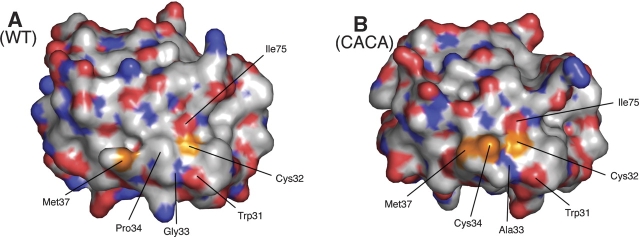Figure 3.
Surface accessibility of the catalytic site cysteines. A solvent-accessible surface representation of the wild-type (left) and CACA mutant (right) forms of TrxA (chain A). The surface is colored red for oxygen, blue for nitrogen, white for carbon, and orange for sulfur (cysteines and methionines). In the wild-type enzyme, only Cys32 can be seen on the surface while Cys35 is completely buried. In the CACA mutant, both Cys32 and Cys34 are surface-exposed.

